We've been aching to be more eco-conscientious now that we're living the rural life, so we did some composting 101 research and started our very own organic cycle of decomposition. Ladies and gents, meet the newest addition to our family! This boxy little lady has officially joined the ranks of our side yard, right along with the propane tank and our soon-to-be functional chicken coop.
I was a bit hesitant about the whole composting thing (what if I do it wrong? What if it attracts bugs? What if I'm just left with a pile of smelly crap?), but it's actually a lot easier than you'd think. Here's our little composting 101: the lowdown on upcycling your leftovers.
Composting 101
Composting 101 Step 1: Order a composting bin.
You can find plans to make them online, but I think for newbies it's easiest to just buy a standard bin. Otherwise, you could potentially wind up getting plastic components that'll leach into your compost or metal parts that will rust. We went with the Soilsaver Classic Composter for a solid choice that'll last a long time. It's available on Amazon, but we picked ours up at the Solana Center for Environmental Innovation here in San Diego. The county subsidizes the cost so that residents in certain areas only have to pay $40 instead of the usual retail price of $94. To see if your county has a similar program, Google your county name plus the word “composting.” That'll bring up any local resources in your area.
It arrived in a flat box with all the plastic screws and parts we needed to put it together. We did go back and forth a bit about where to put it, but decided that the side yard was best because it's close enough that I'll actually walk over there and throw our stuff out, but far enough away that it won't be attracting bugs near the house. Be aware that you can place your composting bin on concrete, but it's liable to stain the ground wherever it sits. A semi-shaded area is best so that the sun can heat up your bin and accelerate decomposition without getting it TOO hot. If your compost bin is going to be somewhat far from the house, you'll probably want to get a bucket to collect everything in in the kitchen until you take it out.
Composting 101 Step 2: Throw your leftovers in there.
I've found that coffee grounds, egg shells and banana peels are things we have a lot of that happen to compost really well. We're honestly not all that particular about what we compost, but we do avoid putting dairy, meat, pasta or oils in there. We strive for a 50/50 ratio of greens (grass clippings, fruit, vegetables, coffee grounds) to browns (cardboard, newspaper, paper plates, paper towels, fall leaves). And yes, our compost bin is a lot more full than this now. We've been at it for a little over a month and we have a good, solid six inches of muck in there.
Composting 101 Step 3: Stir it up
Little darlin, stir it up! Sung to Bob Marley's tune. I go out there every couple of days and turn the pile with an old shovel to aerate it and aid the decomposition process. This really isn't totally necessary, but it helps speed things along.
If you ask any composting expert (yes, I tracked one down at the Solana Center and riddled her with questions), they'll give you their own little composting 101 and explain that composting is a very scientific balance of microbes feeding off of the reaction between oxygen, carbon and nitrogen.
If you ask me, it's all just dirt. So give it a try! Toss your scraps in a bin, let it sit for awhile (you don't want to get over-eager and use compost before it's fully broken down, or it can actually harm your plants), throw it in your garden and reap the spoils of your…well, spoils.
We've also started using a second composter that doesn't require manual turning. You can ready about our fancy composter here.
For more gardening tips, check out our spring planting calendar, see how we re-use old tires in our garden and learn how to make toilet paper roll seed starters!
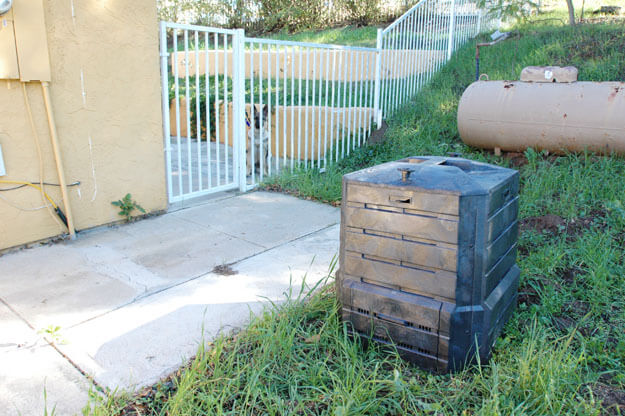
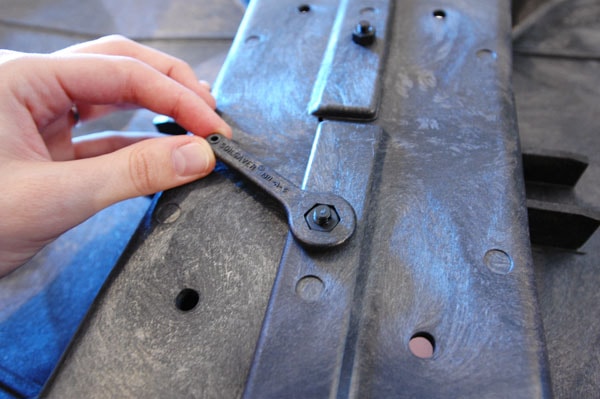
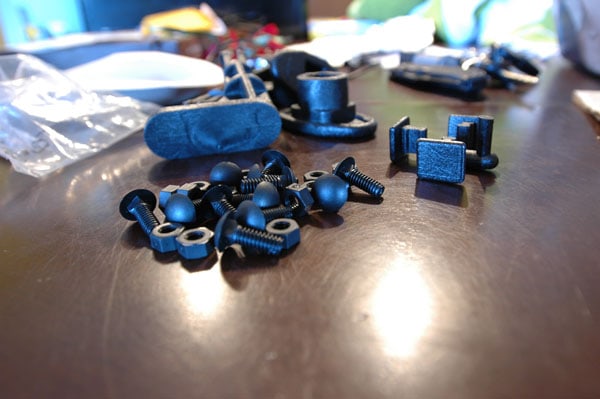
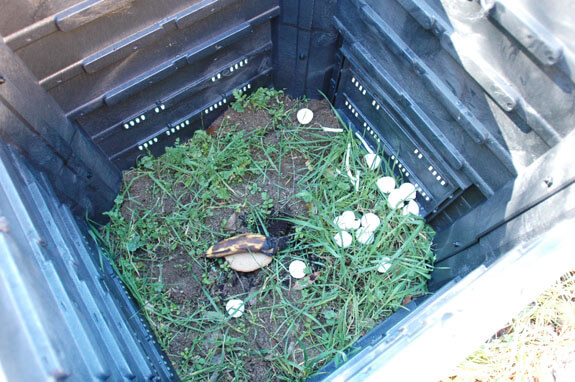
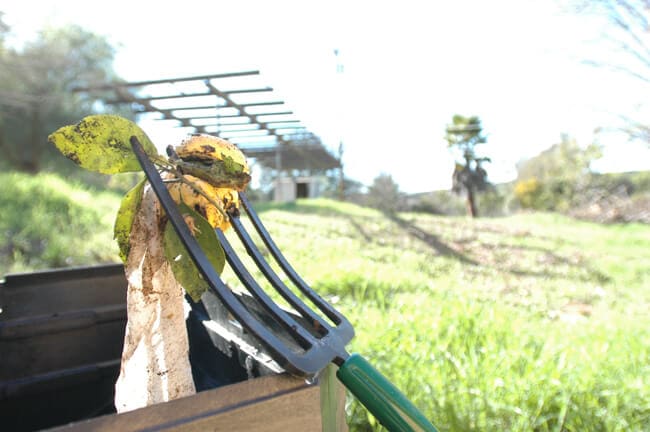

My mom used to compost and it provided such good soil! I haven’t tried it at my house though. Thanks for the tips.
I started a compost heap on a spot at the bottom ofour yard. We live on a sloping hill and the area where the heap is gets lots of runoff water and drains well nd also get sunlight….as well as being away from our house and near where we want to start a small garden this Spring. I LOVE watching our kitchen scraps, newspaper, leaves and grass clippings turn to rich, dark soil for our garden! I have been on a huge money saving mission for a year now and, although composting doesn’t save money on a daily or monthly basis…it does save on garden expenses (no need for fertilizer from the store) and makes use of what we would throw into the garbage. I feel great knowing I am turning trash into something useful!
I’m so glad I’m not the only one! I find myself admiring our heap of trash with great pride. Haha.